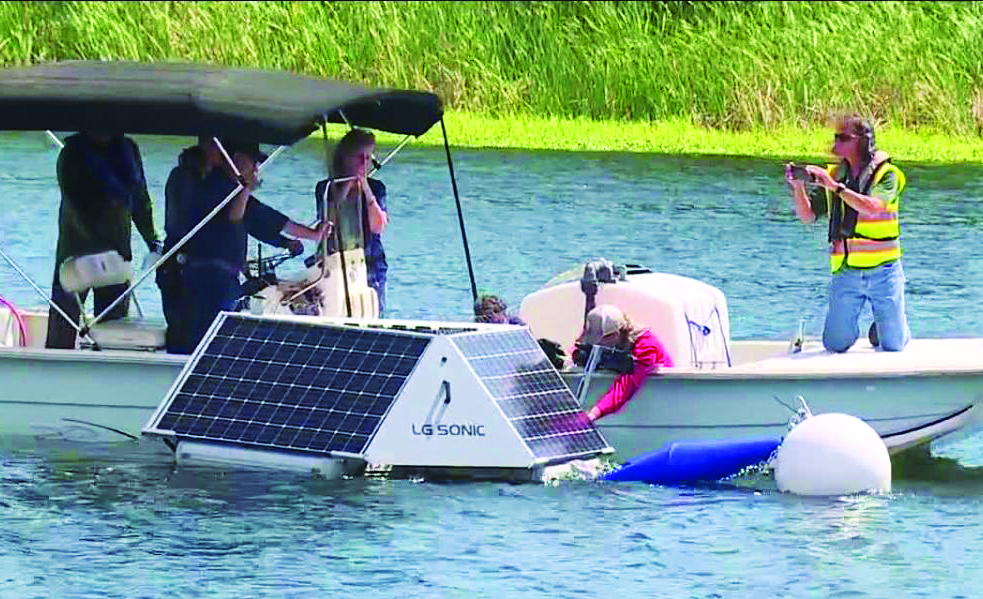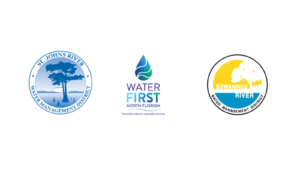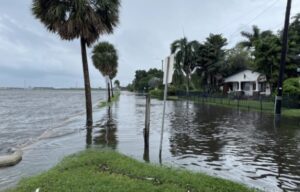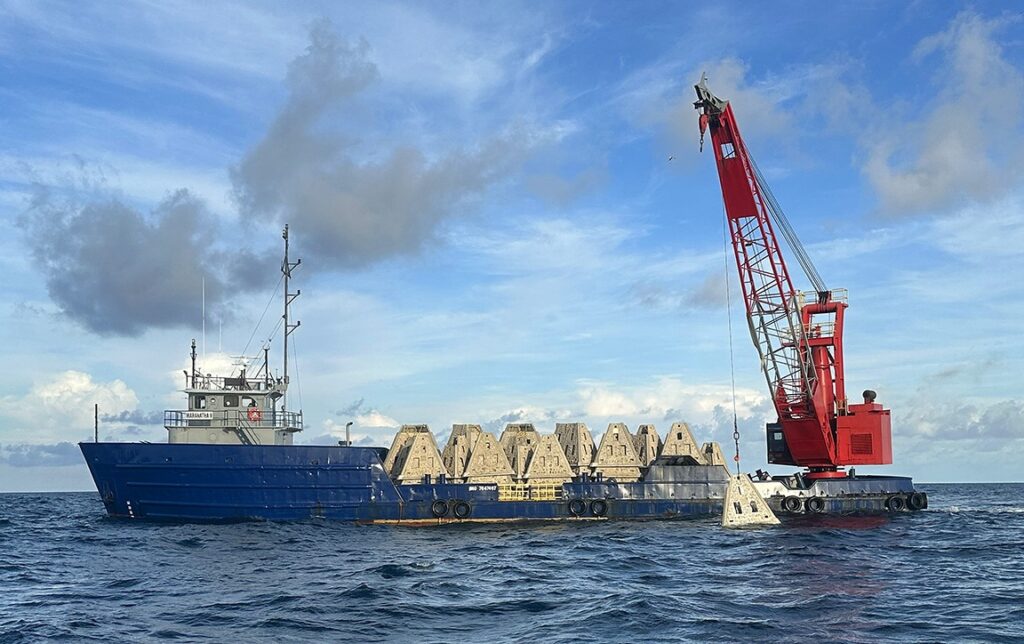By Staff Reports

The city of Tampa recently has adopted an innovative approach to control algae in the Hillsborough River by installing two cutting-edge LG Sonic MPC-Buoys(ultrasonic buoys).
These advanced buoys have been specifically designed to curb the growth of blue-green algae by employing ultrasonic sound waves. By blocking algae’s access to sunlight and nutrients, the ultrasonic waves cause the algae to sink to the riverbed and die off without releasing any toxins.
This technology effectively mitigates excessive algae growth, allowing for the restoration of healthy Dissolved Oxygen (DO) levels in the water. DO levels are crucial for supporting aquatic life, and their improvement results in the revitalization of plant and fish populations. This, in turn, fosters a balanced and thriving ecosystem within the water body.
LG Sonic’s ultrasonic buoys technology is a sustainable solution for addressing algal blooms in large water surfaces. It has been successfully implemented by major utilities in the United States, including American Water, NIPSCO, and the Vallecitos Water District. Although the technology’s effectiveness in moving water bodies like the Hillsborough River still is being evaluated, it has demonstrated promising results in various environments, highlighting its broad applicability in tackling algae-related challenges across diverse water ecosystems.
Capable of covering a 2600-foot radius, each LG Sonic buoy can emit sound waves that reach up to the riverbanks, preventing algae from growing and spreading.
John Ring, the City of Tampa Water Production Manager, believes this technology will help manage algal blooms without resorting to algaecides. He also noted that the ultrasonic buoys enable the adjustment of frequency according to the specific type of bloom or algae species present, facilitating continuous monitoring and control.
Funded by the Florida Department of Environmental Protection, this pilot program will closely examine the effects of the LG Sonic buoys on the Hillsborough River over the next two years. During this time, the city will test two locations and gather data and samples to assess the ultrasonic method’s efficacy compared to the traditional copper sulfate method.
The primary goal of implementing LG Sonic technology is to maintain high water quality in the city. John Ring emphasized that this non-invasive approach would help ensure good taste and odor in the water supply.
The LG Sonic team is eager to see the pilot program’s results and remains dedicated to offering innovative solutions for algae control and water quality management.●
Did You Know
The LG Sonic buoys cover a 2600-foot radius, projecting sound waves to the riverbanks and preventing algae from growing and proliferating. John Ring, the City of Tampa Water Production Manager, stated that this technology offers an alternative to using algaecides for algae control.
























